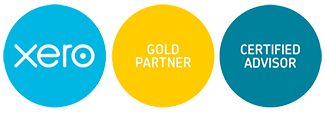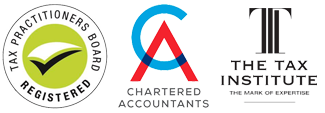|
Assessing if an employee has worked 20 hours or more
JobKeeper payments from 28 September 2020 are paid at a lower rate for employees who worked less than 20 hours per week on average in the four weeks of pay periods before 1 March 2020.
The Commissioner of Taxation will have discretion to set out alternative tests for those situations where an employee’s or business participant’s hours were not usual during February 2020. Also, the ATO will provide guidance on how this will be dealt with when pay periods are not weekly.
Can I keep getting JobKeeper until September?
If your business and your employees passed the original eligibility tests to access JobKeeper, and you have fulfilled your wage requirements, you can continue to claim JobKeeper up until the last JobKeeper fortnight that ends on 27 September 2020.
ATO assistant commissioner Andrew Watson said in a recent interview, “Once you’re in, you’re in to the end of September. If you meet the eligibility test once, you’re in it for the whole time.” The original eligibility test was a once only test although there are ongoing conditions that need to be satisfied for each JobKeeper fortnight.
JobSeeker and other support
Coronavirus supplement
The Coronavirus supplement will continue, albeit on a reduced rate of $250 per fortnight (from $550), from 25 September until 31 December 2020 for eligible individuals.
| 27 April to 24 September 2020 |
$550 per fortnight |
| 25 September to 31 December 2020 |
$250 per fortnight |
Eligibility remains the same. That is, those receiving:
- JobSeeker Payment (and all payments transitioning as a result of JobSeeker Payment)
- Youth Allowance
- Parenting Payment (Partnered and Single)
- Austudy
- ABSTUDY Living Allowance
- Farm Household Allowance
- Special Benefit
- Eligible New Enterprise Incentive Scheme participants
- Department of Veterans’ Affairs Education Schemes
The eligibility criteria and some of the tests for access to income support is changing.
Eligibility and access
The expanded eligibility criteria for the Jobseeker Payment and the Youth Allowance Jobseeker will continue to apply until 31 December 2020:
- Permanent employees who have been stood down or lost their jobs (and are not receiving payments from an employer or through insurance),
- Sole traders, the self-employed, casuals or contractors who meet the income and assets tests.
In addition, if you receive JobSeeker or Youth Allowance payments, the amount you can earn before impacting income support has been increased to $300 per fortnight from 25 September 2020 until 31 December 2020.
However, a number of restrictions have been reintroduced.
Reintroduction of assets and partner income tests
From 25 September 2020, the assets test and the Liquid Assets Waiting Period (applies to those with assets such as cash savings worth over $5,500 for singles or $11,000 for singles with children and partnered people) will be reintroduced for access to income support payments.
In addition, partner income testing will resume from 25 September, albeit with higher thresholds than those pre coronavirus. That is, you will not be eligible for income support if you are not earning an income but your partner earns $3,086.11 per fortnight or $80,238.89 per annum. The partner income test taper rate will increase from 25 cents for every dollar of partner income earned over $996 per fortnight to 27 cents for every dollar of partner income earned over $1,165 per fortnight.
Reintroduction of job seeking requirements
Job seeking requirements that were suspended from 24 March 2020 have been introduced from 9 June 2020. The mutual obligation requirements include:
- Voluntary job searches
- At least one phone or online appointment with a jobseeker’s employment services provider
- Voluntary participation in activities, either online or in person, and
- No payment suspensions or penalties for failure to comply.
Waiting periods continue to be waived
Some waiting periods for access to income support will continue to be waived until 31 December 2020:
- The one-week ordinary waiting period is waived.
- The newly arrived resident’s waiting period for new migrants (previously four years). Claimants will still need to meet residency requirements, that is they will need to hold a permanent visa. Affected claimants will need to serve the remainder of this waiting period at the end of the period the Coronavirus Supplement is paid for.
- The Seasonal Work Preclusion Period for those who are eligible for the Coronavirus supplement -this applies to those who finished seasonal, contract or intermittent work in the six months prior to claiming income support.
If you have any concerns regarding your circumstances please contact your client manager on (02) 8543 6800 or email them directly.
|



 Business Matters Newsletter – Q3 2020
Business Matters Newsletter – Q3 2020 